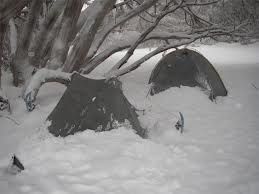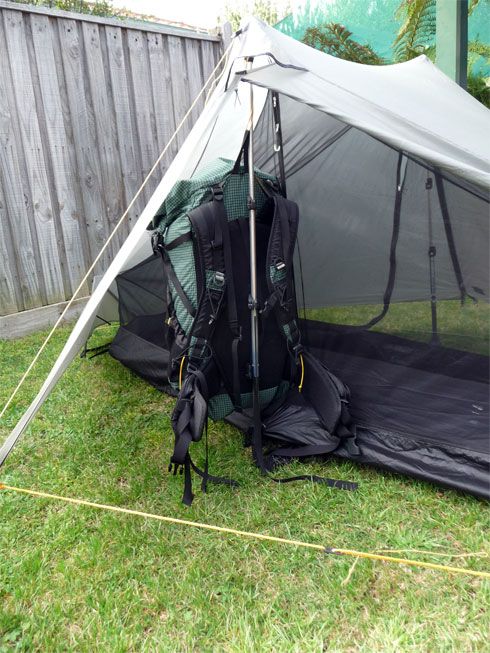My current tent is the Hexamid Twin which I have used for 56 nights. I am very pleased with the tent's performance and 20.4 ounce weight (including everything - tent, groundsheet, stuff sack, stakes). However, although I have never camped in conditions of accumulating snow, I have my doubts regarding whether this shelter is capable of handling accumulating snow and/or conditions prevailing in a winter storm such as snow drifts, horizontally falling wind driven snow, etc...
Although I do not go on winter camping trips often, this is an area that I am looking to get into in the future. I also am in the beginning stages of planning a PCT thru hike and will be taking a snow skills course in the winter to prepare. I would like to bring a snow worthy shelter on that trip, and also possibly use this shelter in the high Sierras and the Cascades depending on the time of year I enter those areas. I am already planning a gear swap in Kennedy Meadows and might want to swap out the Hexamid for a more snow worthy shelter, particularly if I go with my plans of an earlier than typical start which would put me in the Sierras in late May or early June.
I had a Copper Spur UL1 prior to the Hexamid which I found too small both in terms of having gear with me in the tent and being surprisingly restrictive in terms of length. However, I felt like that shelter could be very good in snow even though it is not a "four season tent". I don't think that I'm going to find anything that is truly "four season" and also light weight. Does anyone with a Copper Spur have experience using it in accumulating snow and/or heavy snow storms? Or are there any other suggestions for a tent meeting my anticipated usage patterns?
(BTW, I know that most PCT thru hikers do not switch tents at Kennedy Meadows and in fact many go with UL shelters. My personal preference is to make some gear changes at that point, both due to advice that I trust as well as general risk aversion, and I'm willing to take the weight penalty and possibly make less miles per day in the High Sierra as a result. So I'm not looking to turn this into a debate over whether or not to use UL shelters in the Sierras in early season, just seeking advice on snow worthy lighter shelters. )
Thanks for any input.
- Home
- Forum
- Journals
- Gallery
- What's New?
- Todays Posts
- 2,000 Miler Listing
-
Odd & Ends
- About WhiteBlaze/Tools
- About WhiteBlaze
- WhiteBlaze user agreement
- WhiteBlaze logo progression
- WhiteBlaze screen savers
- Purchase a banner spot
- Quick reference
- Usercp
- Subscribed Threads
- Members List
- Calendar
- Mark all forums read




 Reply With Quote
Reply With Quote



